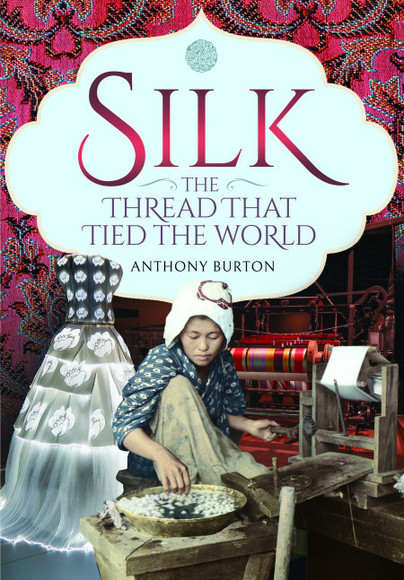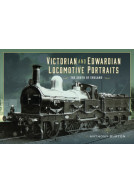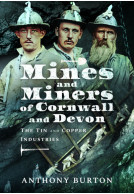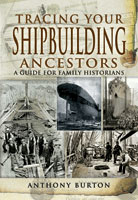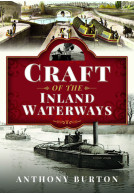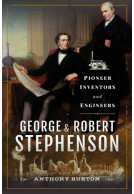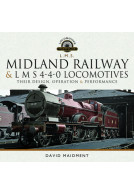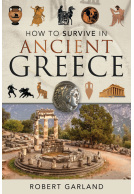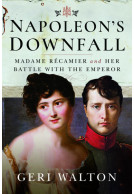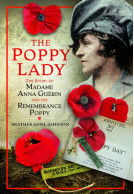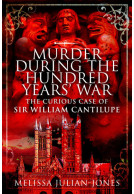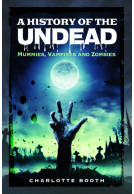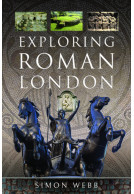Silk, the Thread that Tied the World (eBook)
Imprint: Pen & Sword History
File Size: 22.6 MB (.epub)
Illustrations: 70 colour & black and white illustrations
ISBN: 9781526780935
Published: 5th November 2021
| Other formats available - Buy the Hardback and get the eBook for £1.99! | Price |
|---|---|
| Silk, the Thread that Tied the… Hardback Add to Basket | £17.50 |
Over a thousand years ago the Chinese discovered that the slender filaments that formed the cocoon of the silk moth, could be woven into beautiful shimmering fabrics.
For centuries they were able to keep the process a secret, but eventually started to trade the valuable cloth with the west, along the silk road.
Silk was a luxury item that bestowed prestige, so it was inevitable that the wealthy wanted their silks to be as elaborate as possible, beautiful designs were produced in the Islamic world and gradually a European industry developed.
In the 19th century mechanisation of the time consuming hand weaving process, had resulted in products being produced using the Jacquard loom, which used punched cards to create a pattern.
Silk remains the most beautiful woven material in the world, moving from its origins in ancient China to help transform the whole world.
Rating: 5 out of 5 stars
NetGalley, June Lee
Anthony Burton’s *Silk, the Thread that Tied the World* is a rich tapestry of history, craftsmanship, and global interconnectedness, all woven together through the story of silk. This book explores the origins, development, and worldwide influence of silk, offering readers a fascinating journey from ancient China to the present day.
The book examines the intricate processes of silk weaving, from the early hand-looms to the mechanization of the 19th century, notably with the introduction of the Jacquard loom. Burton's detailed descriptions of these technological advancements provide insight into how silk production evolved and how these innovations impacted global trade and industry. One of the book's strengths is its exploration of how silk connected diverse cultures and economies. As the fabric traveled from China to the Islamic world and eventually to Europe, it brought with it not just luxury goods but also ideas, technologies, and cultural exchanges that shaped the development of entire regions. The narrative underscores how silk was not merely a commodity but a thread that tied together different parts of the world, influencing everything from fashion to international relations.
Silk, the Thread that Tied the World is a well researched and written book that taught me quite a bot about a topic I have never thought to explore before. I thought the history of the industry was interesting to read, and the descriptions and chosen images were nicely matched. I thought the writing was accessible and generally easy to follow... I think those interested in the subject will not want to miss this read, and other will learn a great deal and enjoy the read as well.
NetGalley, Sharon Tyler
Rating: 5 out of 5 stars
NetGalley, E Rutherford
Having always been interested in the history and romance of the Silk Route I found this book fascinating with it’s detailed history of silk, how it was discovered and made and it’s influence and value as a global commodity. There is a lot of technical detail which some readers may find tedious but I felt it was an essential element to the whole story of the silk process. Highly recommended for historians and fashionistas alike.
A delightful meeting of history, fashion, and technology.
NetGalley, A. Beckert
As someone who enjoys fiber craft and creating clothing, I fully understand the hobby craft comes at the end of a very long process of technological development to make my trip to the craft store and my home assembly of clothes a recreational activity rather than a necessity. Since I'm also a hungry consumer of knowledge, this book scratches the itch to know more about one of the most storied natural fibers worked by humankind.
Silk carries so much with it - lore, morality, history, luxury - but what I found most interesting in this book was how closely tied the millennia of silk trading and development is to some of the technologies in daily use today. For example, the use of our current numeric system and its ties to the silk trade.
I would highly recommend this book to anyone interested in the history of technology, chemistry, fashion, textiles, or even business and trade. It supports its thesis well - silk really did tie the world together.
This is a great historical book which I felt was very well written and amazingly kept me hooked on the history of silk.
NetGalley, Aisha Bari
An informative read about the silk: the material, the silk trade and its influence on the world.
NetGalley, Anita Salát
It gives a detailed description of the technicalities of the manufacturing process, how looms developed through many years, what silk manufacturing workshops looked like.
Anthony Burton has written a highly comprehensive history of silk and it’s development and progress around the world over several centuries. The first part of the book contextualises “silk”within the Silk Road and the routes of commerce and communication. Peter Frankopan’s history of the Silk Roads would be an ideal follow up for a greater depth exploration of these early “super highways”. But it is when Anthony Burton starts to focus in depth on the manufacturing and expansion of the silk trade from China to Iran and then into mainland Europe and finally England and America that the book really begins to intrigue and fascinate. The attention to detail regarding the creative and construction process and the I’ve towards of more and more automation is fascinating. Our world of disposable clothing and fabrics is a sharp contrast to the value and pride given to silk over many centuries . If you work in the textile trade , have a fascination towards fashion and design or simply enjoy understanding more about the evolution of a beautiful commodity then this book will be worth exploring.
NetGalley, Stephen Richard
Anthony Burton’s scholarly book tells the history of silk from its discovery, through to its cultivation and spread throughout the would via the legendary “Silk Road”, its heyday in the 17th and 18th centuries and its future as the “Queen of fabrics”. Fully illustrated with vintage drawings, maps and modern colour photographs, this book is immensely readable.
NetGalley, Wyn Lewis
Burton digs deep into the techniques of silk weaving which gets quite technical at times; meticulous research has gone into this book, but a glossary of terminology is included for the uninitiated. He also explores the invention of paper and other innovations, including gunpowder, that became staples of trade along the silk routes. It was also a pipeline for emergent religion such as Zoroastrianism and Buddhism.
The story of silk is well known, but its future less so as big clothes stores stop selling it due to the destructive means of its manufacture. One day it may go the way of fur and fall entirely out of favour, but there’s no denying the allure and richness of its history. I love any book about the history of silk and the period of history when it was first discovered, and this book didn’t disappoint. Pen & Sword titles are consistently excellent and Anthony Burton’s book was a joy to read.
About Anthony Burton
Anthony Burton has been writing about the history of transport and technology for fifty years. His books include Remains of a Revolution, The Railway Builders, The Locomotive Pioneers and biographies of Thomas Telford, George and Robert Stephenson and a biography of Marc and Isambard Brunel (due to be published in 2022). He has worked extensively in TV and most recently as historical adviser to the Discovery Channel series Industrial Revelations, More Industrial Revelations and On the Rails.







